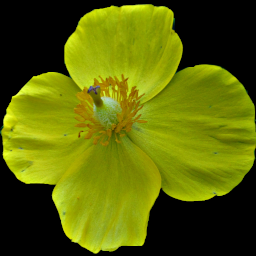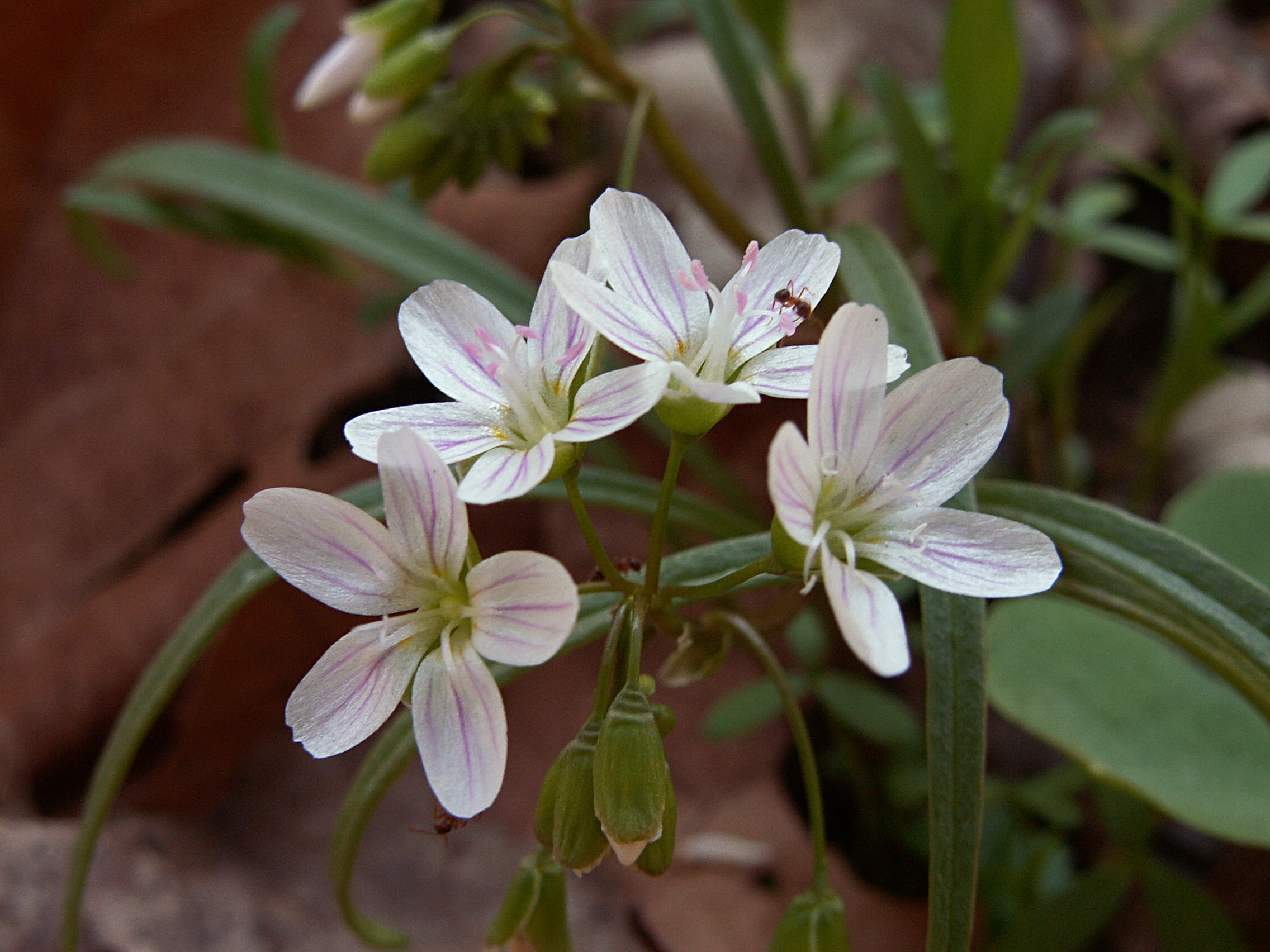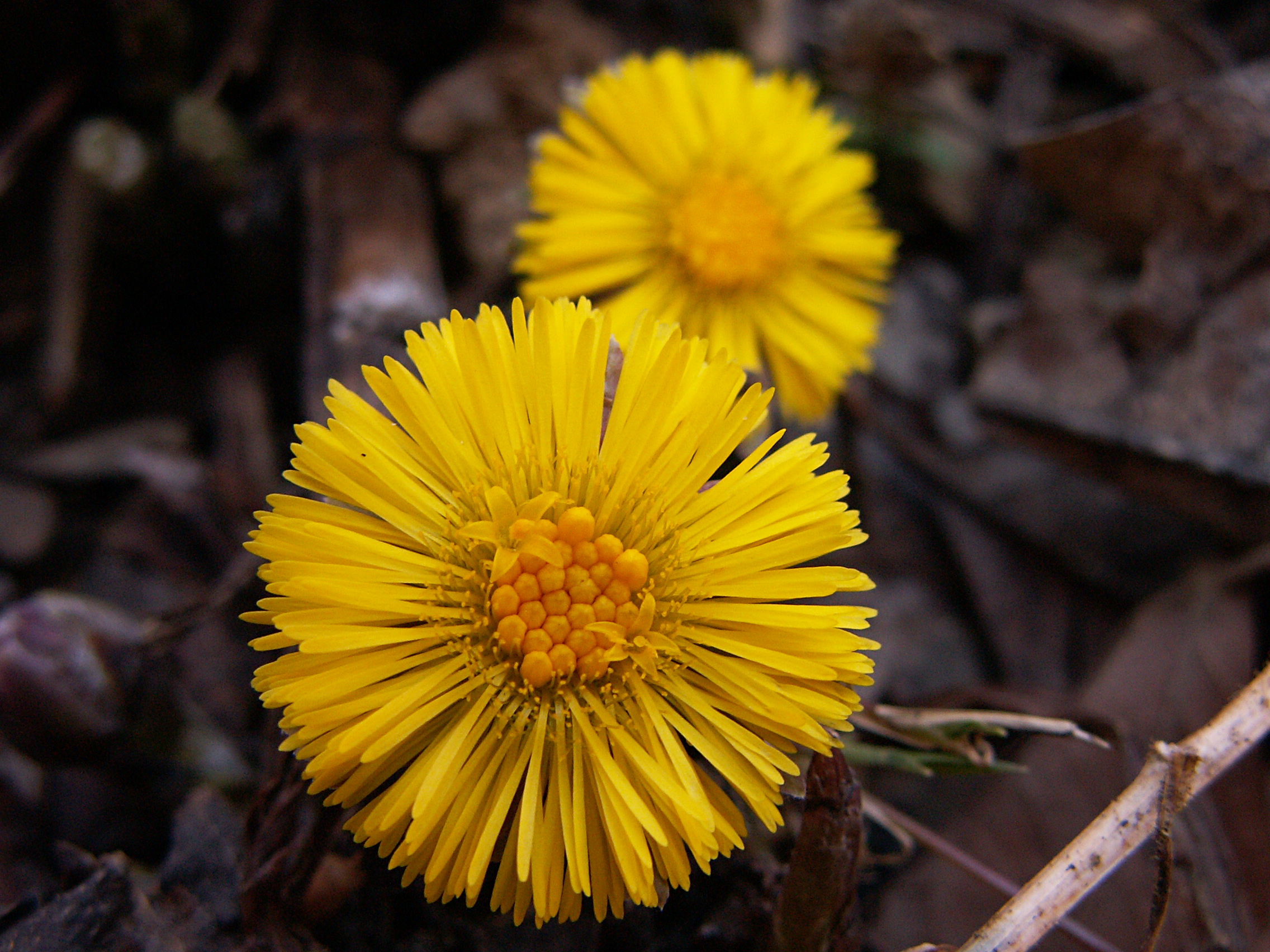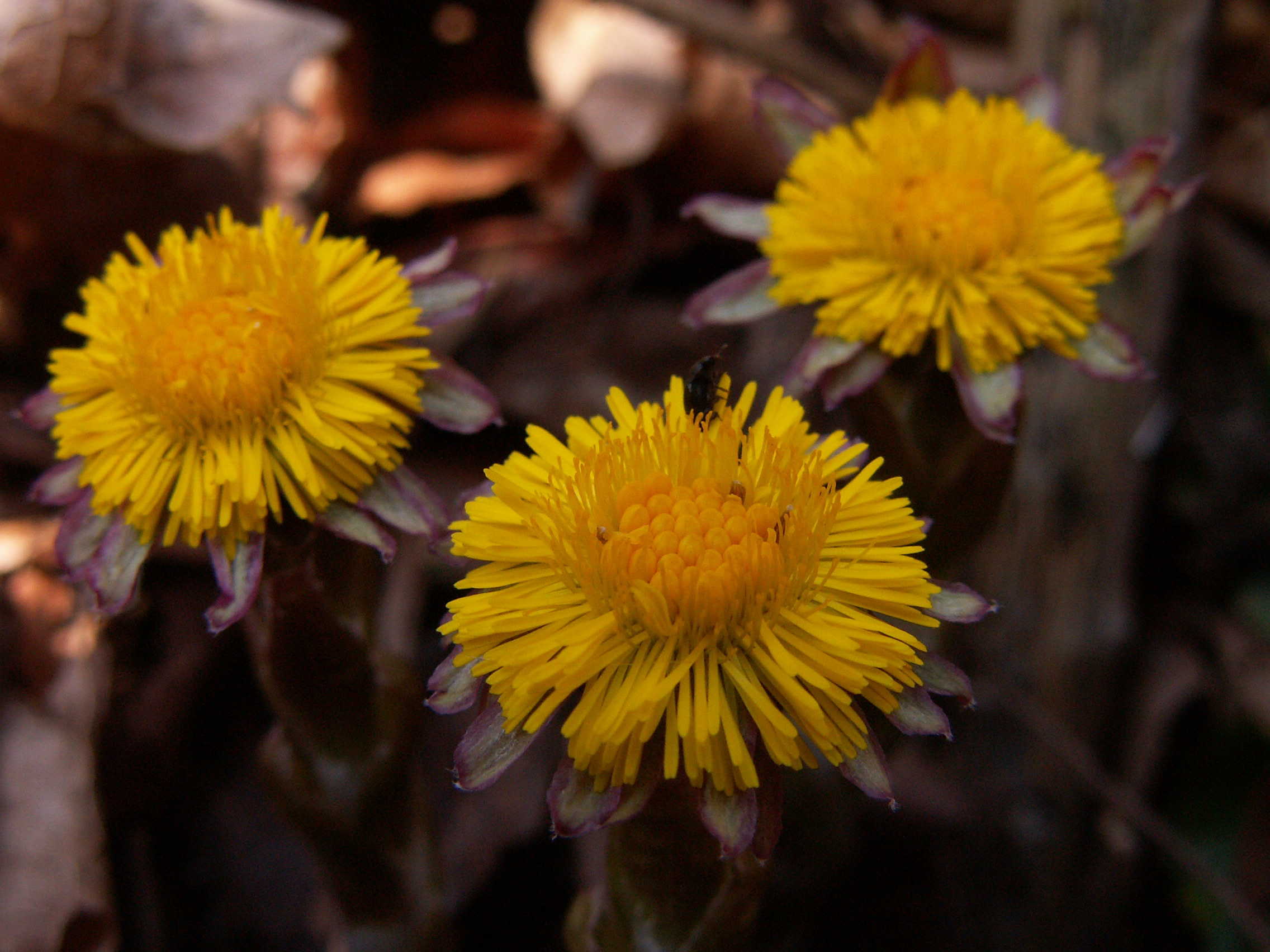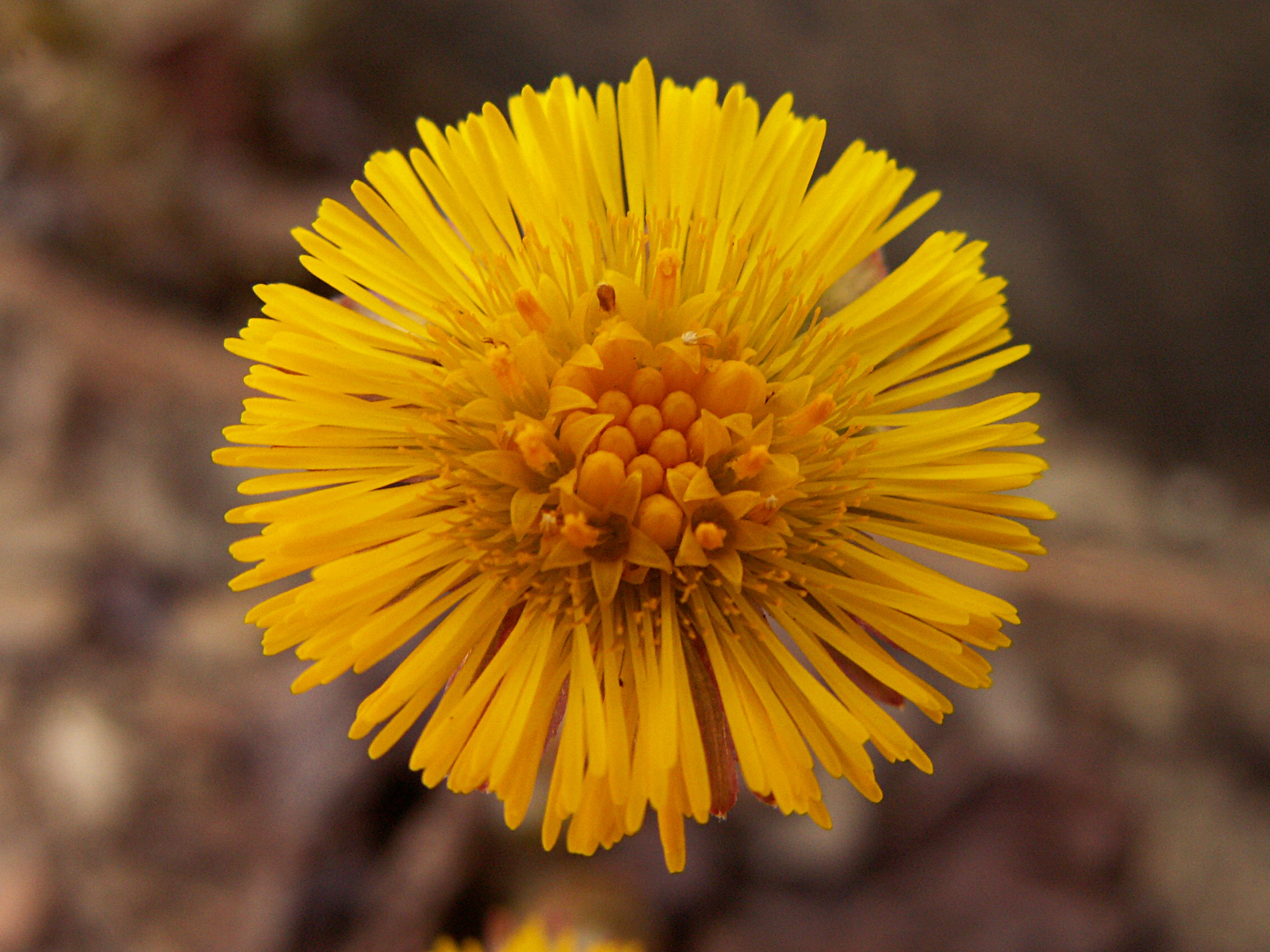Among the earliest woodland flowers, Spring Beauties are abundant and cheerful when the rest of the woods is just waking up. These flowers were blooming in the middle of April along the Trillium Trail in Fox Chapel.
Gray describes the genus and the species:
CLAYTONIA [Gronov.] L. SPRING BEAUTY. Sepals 2, ovate, free, persistent. Stamens 6, adhering to the short claws of the petals. Style 3-cleft at the apex. Pod l-celled, 3-valved, 3-6-seeded. — Perennials, our two species sending up simple stems in early spring from a small deep tuber, bearing a pair of opposite leaves, and a loose raceme of pretty flowers. Corolla rose-color with deeper veins, opening for more than one day. (Named in honor of Dr. John Clayton, one of our earliest botanists, who contributed to Gronovius the materials for the Flora Virginica.)
C. virginica L. Leaves linear-lanceolate, elongated (7-16 cm. long).— Moist open woods, N. S. to Sask., and southw.; common, especially westw. and southw.
